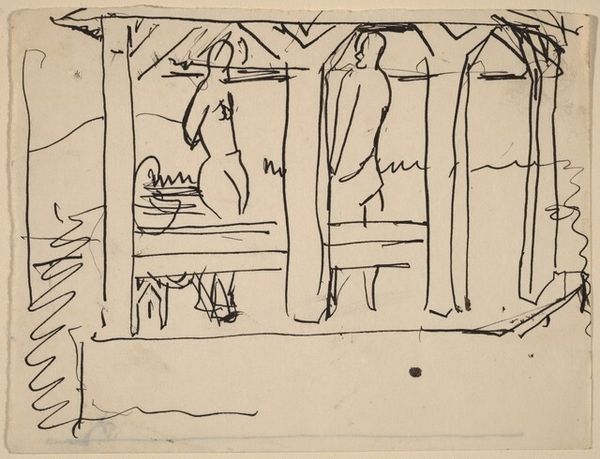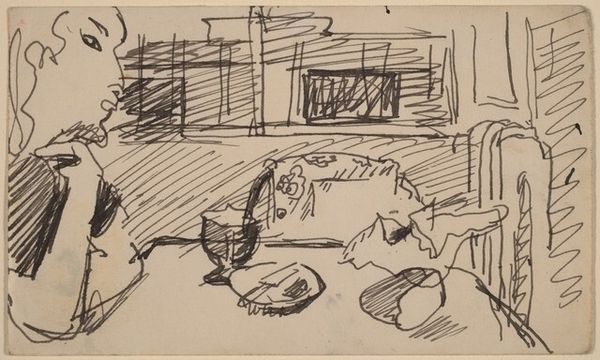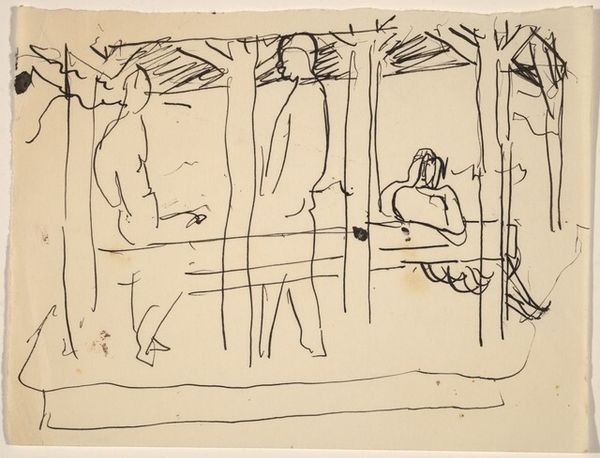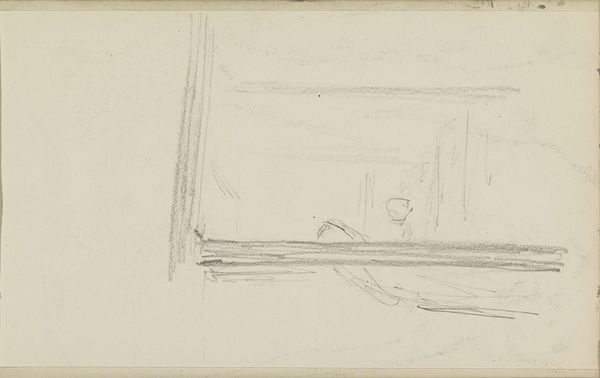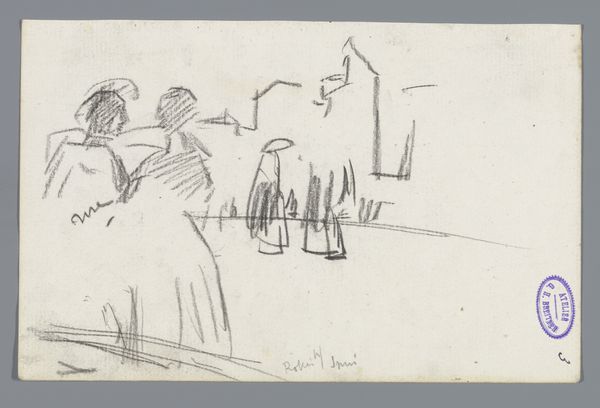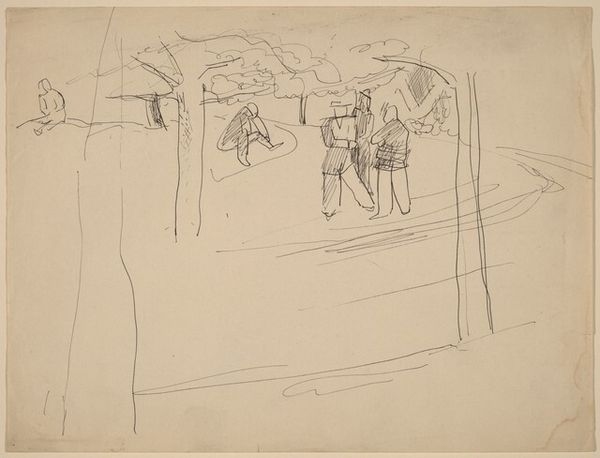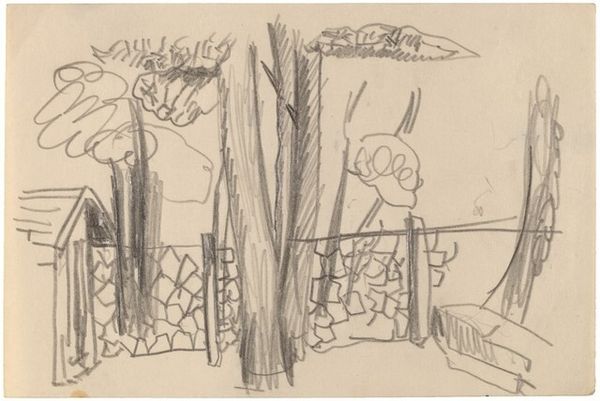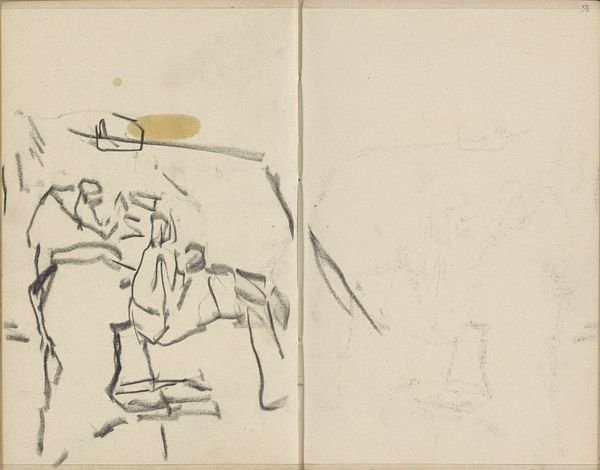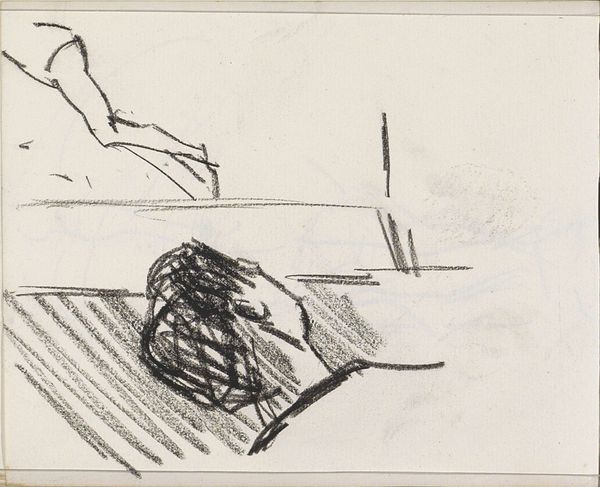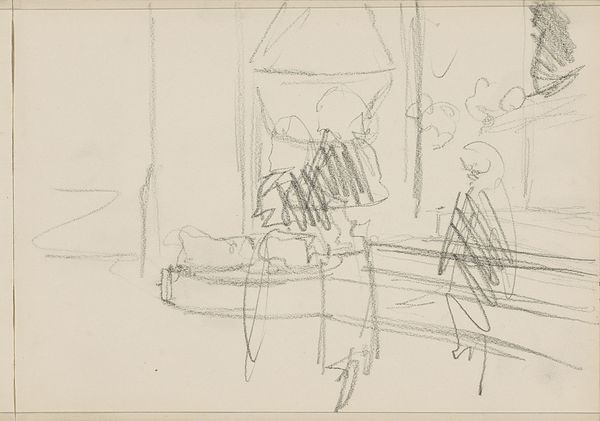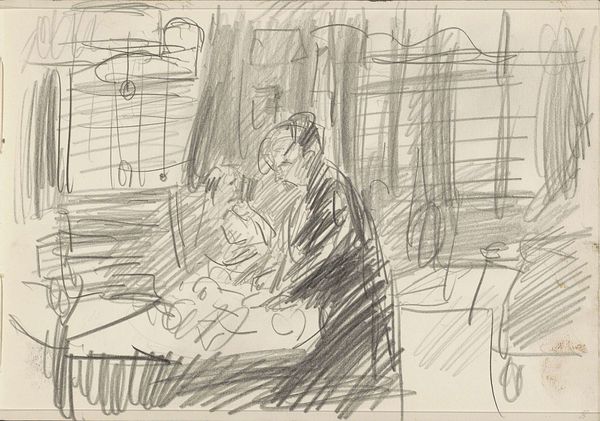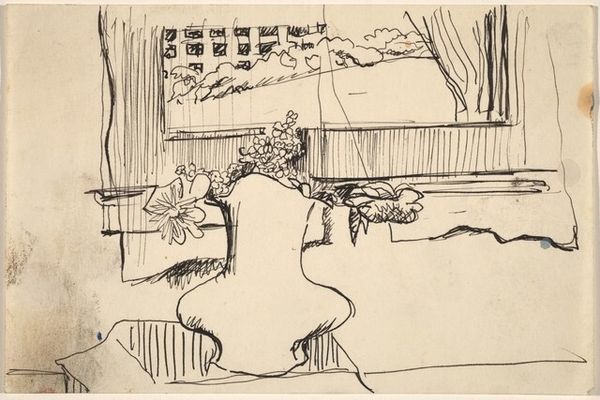
drawing, ink, pen
#
portrait
#
drawing
#
ink drawing
#
pen drawing
#
pen sketch
#
landscape
#
figuration
#
personal sketchbook
#
ink
#
ink drawing experimentation
#
pen-ink sketch
#
line
#
pen work
#
sketchbook drawing
#
pen
#
storyboard and sketchbook work
#
sketchbook art
Dimensions: overall: 10.2 x 15.2 cm (4 x 6 in.)
Copyright: National Gallery of Art: CC0 1.0
Editor: This is "Two Figures under Cover, Outdoors," a pen and ink drawing by Mark Rothko. It's intriguing; almost like a quickly captured scene. I am interested in learning more, especially since Rothko is famous for color field painting. What do you see in this piece, particularly given Rothko’s later work? Curator: The visible *process* here is quite striking, isn’t it? Forget the sublime canvases; here, we’re confronted with the direct, unvarnished labor of art-making. The rudimentary materials—pen and ink on paper—speak volumes. It seems mass-produced and easily disposable, which contrasts sharply with the preciousness often ascribed to drawings by famous artists. Do you think the rawness alters your perception? Editor: Definitely. The simplicity of the materials, the 'disposable' feel, makes it less about the idealized artistic genius and more about the physical act of creating. Curator: Precisely. Consider also that the wooden structure is depicted with lines. I mean literally "depicted"; Rothko *drew* a material. How does this layering of representation – the drawn figures *under* the drawn shelter – affect your understanding of the artwork itself? Editor: That's an interesting point – almost like a commentary on shelter, both literal and perhaps psychological, achieved through labor of production. It reminds me of the social realist art being produced during the Great Depression. Curator: Precisely. The accessibility of these materials challenges assumptions around artistic production, suggesting an implicit connection between the figures and their surroundings, made from wood. What did you make of our conversation? Editor: I see how the sketch and materials themselves become significant. This wasn’t just a study, it’s also evidence of labor, social circumstances, and a deliberate deconstruction of the artistic 'aura.' Curator: Exactly. Focusing on materiality transforms this seemingly simple drawing into a potent social document, even if we can't attach a specific date. It’s not *just* about Rothko's later color fields; it is about a human activity with labor, material, and maybe political meaning that exists independently.
Comments
No comments
Be the first to comment and join the conversation on the ultimate creative platform.
